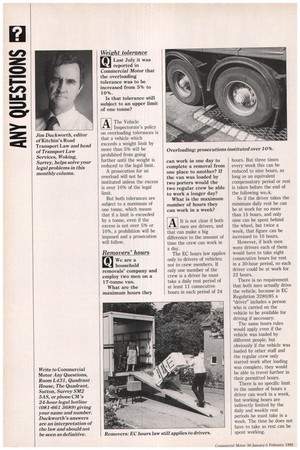Removers' hours
Page 44

If you've noticed an error in this article please click here to report it so we can fix it.
We are a household removals' company and employ two men on a 17-tonne van.
What are the maximum hours they can work in one day to complete a removal from one place to another? If the van was loaded by two porters would the two regular crew be able to work a longer day?
What is the maximum number of hours they can work in a week?
A It is not clear if both
men are drivers, and that can make a big difference to the amount of time the crew can work in a day.
The EC hours law applies only to drivers of vehicles; not to crew members. If only one member of the crew is a driver he must take a daily rest period of at least 11 consecutive hours in each period of 24
hours. But three times every week this can be reduced to nine hours, as long as an equivalent compensatory period or rest is taken before the end of the following week.
So if the driver takes the minimum daily rest he can be at work for no more than 15 hours, and only nine can be spent behind the wheel, but twice a week, that figure can be increased to 10 hours.
However, if both men were drivers each of them would have to take eight consecutive hours for rest in a 30-hour period, so each driver could be at work for 22 hours.
There is no requirement that both men actually drive the vehicle, because in EC Regulation 3280/85 a "driver" includes a person who is carried on the vehicle to be available for driving if necessary.
The same hours rules would apply even if the vehicle was loaded by different people, but obviously if the vehicle was loaded by other staff and the regular crew only started work after loading was complete, they would be able to travel further in their permitted hours.
There is no specific limit to the number of hours a driver can work in a week, but working hours are indirectly limited by the daily and weekly rest periods he must take in a week. The time he does not have to take as rest can be spent working.
















































































